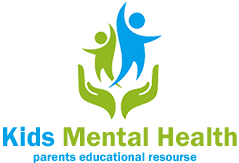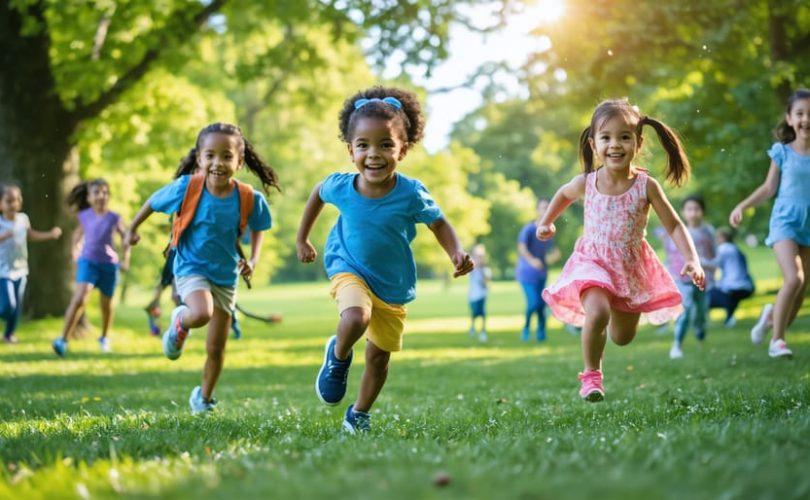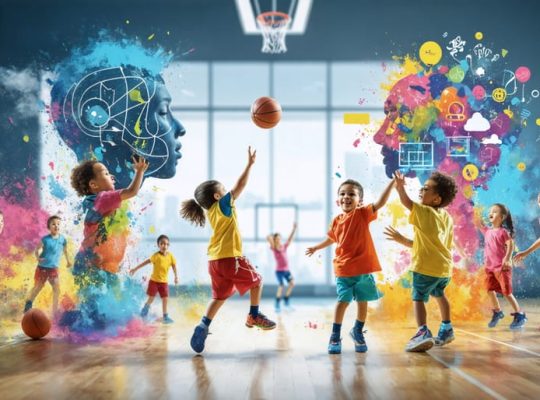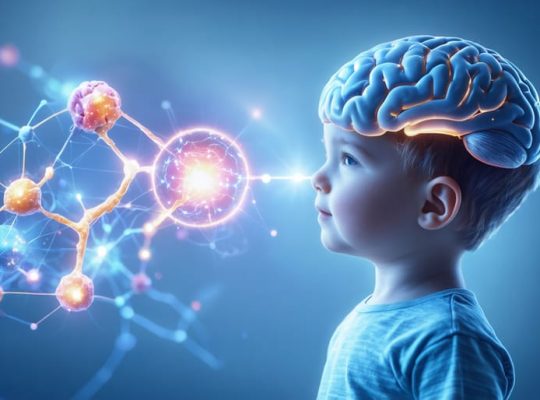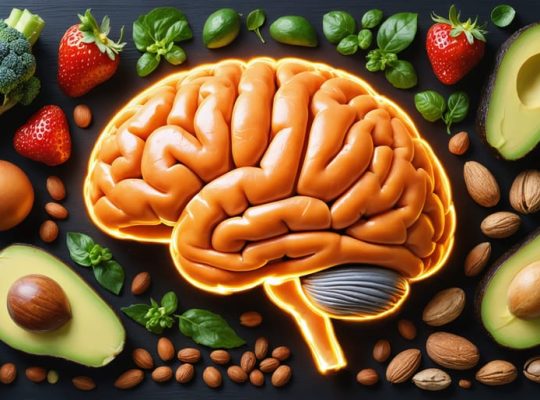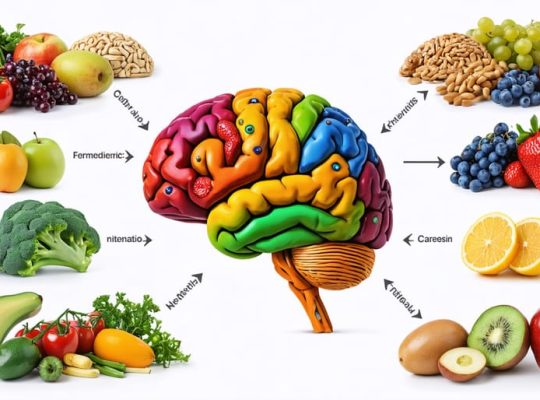Moving your body doesn’t just strengthen muscles – it transforms minds. Research consistently shows that regular physical activity stands as one of the most powerful, yet underutilized tools for supporting mental wellness in both children and adults. The benefits of exercise extend far beyond physical fitness, triggering the release of mood-boosting chemicals like endorphins and serotonin while reducing stress hormones that can contribute to anxiety and depression.
For parents and caregivers seeking to nurture their children’s mental health, understanding this powerful mind-body connection opens up a world of practical, accessible solutions. Whether it’s a family bike ride, a playground adventure, or a simple dance party in the living room, physical activity offers a natural, medication-free approach to supporting emotional well-being. Even brief periods of movement can create immediate positive changes in mood, focus, and stress levels.
In this article, we’ll explore how different types of physical activity can help children develop resilience, boost self-esteem, and build stronger emotional foundations – all while having fun and creating lasting family memories. Let’s discover how movement can become your child’s superpower for mental wellness.
How Exercise Boosts Your Child’s Brain
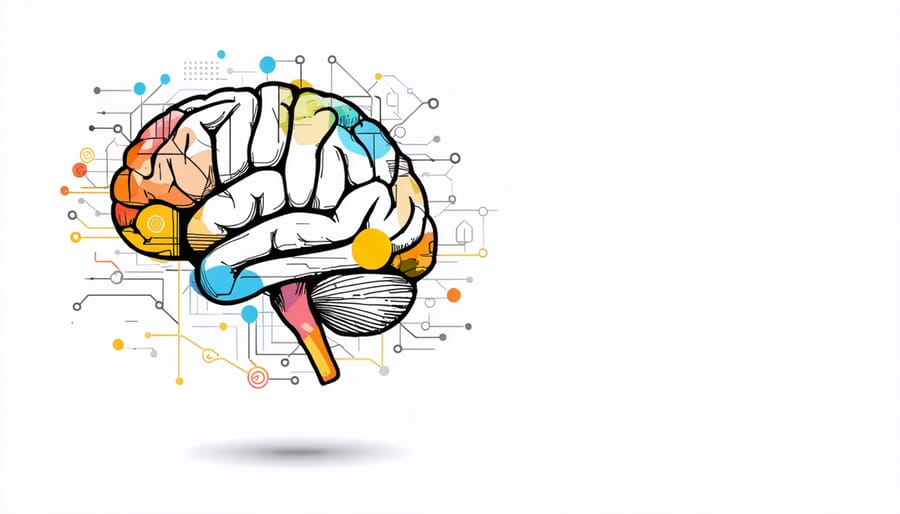
The Brain Chemistry Behind Movement
When we move our bodies, something remarkable happens in our brains. Exercise triggers the release of important brain chemicals called neurotransmitters, which act like natural mood boosters. Think of these chemicals as your body’s own feel-good team: endorphins, which create that wonderful “runner’s high”; serotonin, often called the happiness hormone; and dopamine, which helps us feel motivated and rewarded.
During physical activity, our brains also produce a special protein called BDNF (Brain-Derived Neurotrophic Factor), which works like a fertilizer for our brain cells. This helps create new neural connections and strengthens existing ones, especially in areas responsible for memory, learning, and emotional regulation.
Dr. Sarah Thompson, a pediatric neurologist, explains it simply: “When kids exercise, their brains become more flexible and resilient. It’s like giving their minds a playground to grow and develop.” Regular movement also increases blood flow to the brain, delivering more oxygen and nutrients that support healthy brain development.
This natural brain boost explains why children often feel more focused, calm, and happy after physical activity.
Building Better Brain Connections
Physical activity does more than just strengthen muscles – it literally helps build better brain connections. When children engage in regular movement, their brains release special proteins called neurotrophic factors that act like fertilizer for brain cells, helping them grow and form new connections.
Dr. Sarah Chen, a pediatric neurologist, explains: “Exercise increases blood flow to the brain, delivering more oxygen and nutrients that support cognitive development. This enhanced circulation particularly benefits areas responsible for memory, attention, and learning.”
Research shows that active children typically demonstrate better focus in class, stronger memory retention, and improved problem-solving abilities. Even simple activities like playground games or dance sessions can make a significant difference. A recent study found that children who participated in 20 minutes of physical activity before study sessions showed markedly improved test scores compared to those who remained sedentary.
Think of physical activity as “brain training” – each jump, run, or dance move creates new neural pathways, making the brain more adaptable and ready to learn. Regular movement helps children become better learners while having fun at the same time.
Mental Health Benefits Your Child Gains Through Movement
Anxiety and Stress Relief
In today’s fast-paced world, children face numerous stressors, from academic pressures to social challenges. Physical activity has emerged as a powerful tool for helping young ones manage anxiety and stress naturally. When children engage in regular exercise, their bodies release endorphins – often called “feel-good hormones” – which help reduce stress and promote a sense of wellbeing.
Dr. Sarah Chen, a child psychologist, notes that “active play and structured exercise give children a healthy outlet for nervous energy and worried thoughts.” Whether it’s running around the playground, participating in team sports, or doing yoga, physical movement helps children release physical tension that often accompanies anxiety.
Regular exercise also helps regulate cortisol levels – the body’s primary stress hormone. When children participate in physical activities, especially outdoors, their cortisol levels tend to normalize, leading to improved mood and reduced anxiety symptoms. A recent study found that children who engaged in 60 minutes of daily physical activity showed significantly lower stress levels compared to their less active peers.
Physical activity also provides children with a sense of accomplishment and control, which can be particularly beneficial during anxious moments. Something as simple as completing a dance routine or mastering a new sports skill can boost their confidence and resilience. Additionally, group activities offer social support and connection, creating a positive environment where children can forget their worries while having fun with peers.
Mood Enhancement and Depression Prevention
Physical activity has emerged as a powerful tool in promoting positive mood and preventing depression in children and adolescents. Research consistently shows that regular exercise releases endorphins – often called “feel-good hormones” – which naturally lift spirits and create a sense of well-being. There are numerous ways exercise boosts mental health, particularly in mood regulation.
As Sarah Thompson, a child psychologist, explains, “When children engage in regular physical activity, they often experience an immediate boost in mood that can last for several hours afterward. This natural mood enhancement can be particularly beneficial for children dealing with anxiety or mild depression symptoms.”
The mood-boosting effects of exercise aren’t just short-term. Regular physical activity helps build resilience against future mood disorders by strengthening the brain’s stress-response systems. Children who participate in consistent physical activities often report feeling more confident, capable, and emotionally balanced.
Parents have shared inspiring stories about how movement has transformed their children’s emotional well-being. Jane, a mother of two, noticed a significant improvement in her daughter’s mood after joining a dance class: “The change was remarkable. She became more cheerful, energetic, and better at handling daily challenges. The regular movement really made a difference in her emotional stability.”
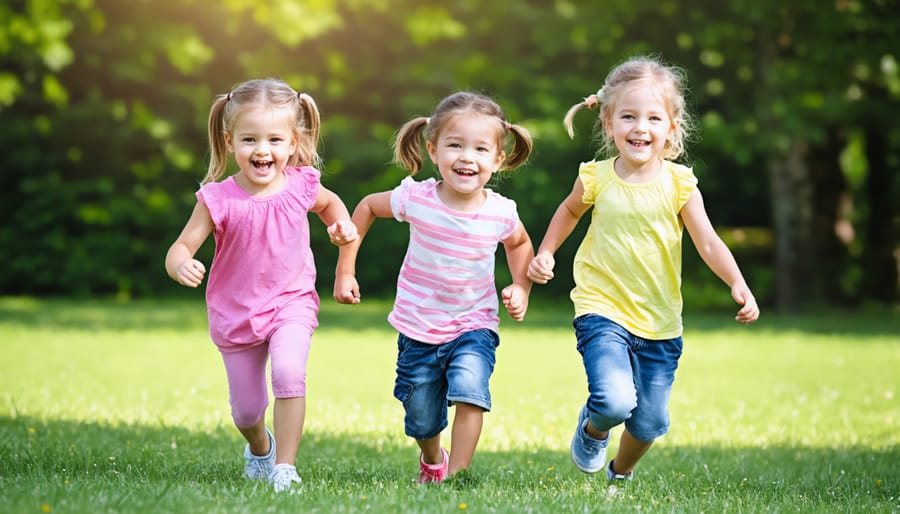
Self-Esteem and Confidence Building
Physical activity does more than just strengthen the body – it’s a powerful builder of self-esteem and confidence in children. When young ones participate in regular exercise or sports and mental health activities, they experience a sense of accomplishment that naturally boosts their self-worth.
Sarah Thompson, a child psychologist, shares: “When children master new physical skills, whether it’s learning to ride a bike or scoring their first basketball goal, they develop a stronger belief in their abilities. This confidence often carries over into other areas of their lives.”
Through physical activities, children learn to set goals, work towards them, and celebrate their progress. Each small victory, from running a little faster to mastering a new dance move, reinforces their sense of capability and builds resilience. Group activities also provide opportunities for social interaction, helping children develop crucial interpersonal skills like teamwork, communication, and leadership.
Parents often notice that their children become more outgoing and self-assured after regularly participating in physical activities. This increased confidence helps them navigate social situations more effectively, make new friends, and feel more comfortable expressing themselves. The positive feedback loop between physical achievement and emotional well-being creates a foundation for lasting self-esteem that benefits children throughout their development.
Making Physical Activity Fun and Accessible
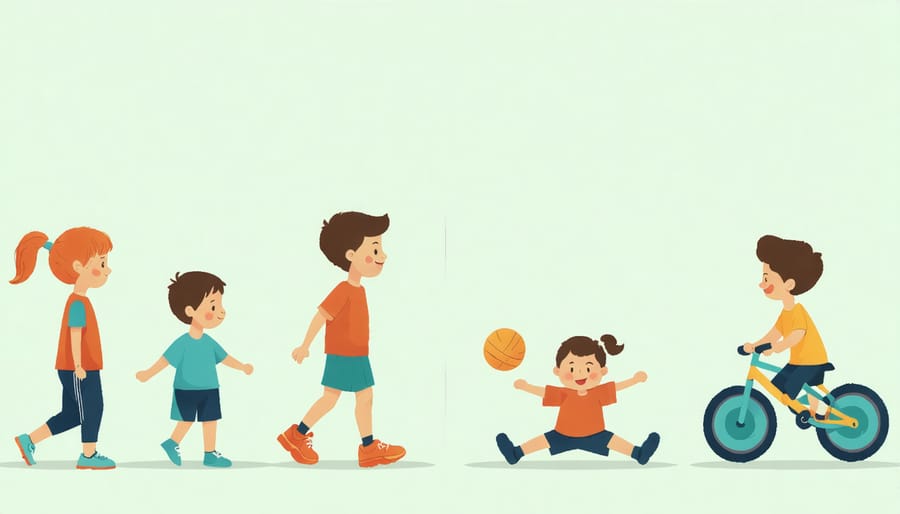
Age-Appropriate Activities
Choosing age-appropriate physical activities ensures children stay engaged while reaping mental health benefits. For babies, gentle infant activities like tummy time and crawling games help develop both motor skills and emotional regulation.
Toddlers (ages 1-3) thrive with activities like dancing, obstacle courses, and ball games, which build confidence while releasing mood-boosting endorphins. These playful movements also help them process big emotions through physical expression.
For school-age children (ages 4-12), team sports, swimming, or playground activities offer social interaction alongside physical benefits. These activities teach cooperation, build self-esteem, and provide natural opportunities for stress relief.
Teenagers benefit from more structured activities like yoga, martial arts, or recreational sports leagues. These options help manage academic stress, provide healthy outlets for emotional expression, and build lasting exercise habits.
Remember to follow your child’s interests and comfort level when choosing activities. Start slowly and make it fun – forcing activities can create negative associations. Celebrate small victories and participate together when possible to make physical activity a positive family experience.
Dr. Sarah Chen, child development specialist, suggests, “The best activity is one that your child enjoys and wants to continue. This creates a lifelong positive relationship with exercise and mental well-being.”
Creating a Movement-Friendly Environment
Creating an environment that encourages movement doesn’t have to be complicated or expensive. At home, start by designating a safe play area where children feel comfortable moving freely. Remove obstacles and create an inviting space with simple equipment like jump ropes, balls, or hula hoops.
For parents, leading by example is crucial. When children see you prioritizing physical activity, they’re more likely to follow suit. Make movement a family affair by planning active weekends, taking evening walks together, or having dance parties in the living room.
In school settings, teachers can incorporate movement breaks between lessons. Simple activities like stretching, jumping jacks, or quick dance sessions can help students stay focused while meeting their physical activity needs. Consider creating active learning stations where students can stand or move while completing tasks.
For both environments, consistency is key. Set regular times for physical activity and stick to them. This might mean “movement Monday” at school or “after-dinner walks” at home. Remember to keep activities age-appropriate and fun – when children enjoy moving, they’re more likely to maintain these habits.
Technology can be an ally too. Use movement-based video games on rainy days, or set up obstacle courses inspired by favorite shows or characters. The goal is to make physical activity feel natural and enjoyable rather than forced or punitive.
When to Seek Professional Help
While physical activity generally has positive effects on children’s mental health, there are times when professional guidance may be necessary. As a parent, trust your instincts – you know your child best. Watch for signs that your child’s relationship with exercise might be becoming problematic or if their mental health needs additional support.
Be alert if your child shows sudden changes in their exercise habits, such as becoming obsessive about working out or completely avoiding physical activity. Other warning signs include expressing excessive concerns about body image, showing signs of anxiety or depression that persist for more than two weeks, or experiencing sudden mood changes that affect their daily life.
Consider seeking professional help if you notice:
– Your child expressing feelings of worthlessness or persistent sadness
– Significant changes in sleep patterns or appetite
– Withdrawal from previously enjoyed activities
– Physical complaints without medical cause
– Declining academic performance
– Extreme reactions to exercise-related activities
– Signs of exercise addiction or avoidance
Don’t hesitate to reach out to your child’s pediatrician, who can provide initial guidance and refer you to appropriate specialists if needed. Mental health professionals who specialize in children and adolescents can help address both emotional concerns and develop healthy attitudes toward physical activity.
Remember that seeking help early can prevent more serious issues from developing. Many families work with professionals to find the right balance of physical activity for their child’s mental well-being. Your child’s healthcare team might include:
– Pediatricians
– Child psychologists or psychiatrists
– Physical education specialists
– Occupational therapists
– School counselors
Most importantly, maintain open communication with your child. Let them know that asking for help is a sign of strength, not weakness. Together with professional support, you can help your child develop a healthy relationship with physical activity that supports their mental health.
Physical activity isn’t just about keeping our children physically healthy – it’s a powerful tool for supporting their mental well-being. Throughout this article, we’ve explored how regular exercise can reduce anxiety, improve mood, boost self-esteem, and enhance cognitive function in children. The evidence is clear: active kids are generally happier, more resilient, and better equipped to handle life’s challenges.
Remember, you don’t need expensive equipment or elaborate programs to get started. Simple activities like family walks, backyard games, or dancing in the living room can make a significant difference. The key is consistency and making physical activity an enjoyable part of your family’s daily routine.
As parents, we have the power to shape our children’s relationship with physical activity. By modeling an active lifestyle and creating opportunities for movement, we’re investing in our children’s long-term mental health. Start small, celebrate progress, and focus on making exercise fun rather than competitive or obligatory.
Take action today by choosing one physical activity to try with your child this week. Whether it’s a bike ride around the neighborhood or a game of catch in the park, you’ll be taking an important step toward supporting your child’s mental health through movement. Your child’s mind and body will thank you, and you might just find yourself feeling better too.
Let’s work together to raise a generation of mentally and physically healthy children through the power of active play and movement.
